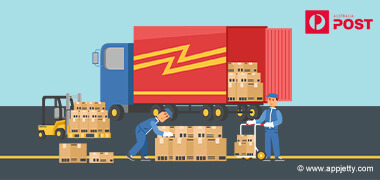The right delivery strategy in e-commerce holds great importance. If you have a feature-rich e-store but don’t follow a fail-safe delivery strategy, you are sure to lose out on a chunk of customers. Since the onset of this pandemic, finetuning your delivery strategy has become indispensable.
If you take care of the deliveries and manage them efficiently, your customers will trust you and return to your store for shopping in the future. This will help you build a good brand rapport and boost your sales over time. However, the question is – how to plan that foolproof delivery strategy? Are there any ways you can use deliveries to your advantage?
The answer is YES. You can use deliveries to your avail and get different benefits from it. There are different ways that you can make your deliveries your source of customer engagement and revenue.
If you are a store owner looking to improve conversions and bottom line with the right delivery practices, this post will guide you. You’ll learn how to get more customers and conversions with the right delivery mechanism and ways.
So, here are a few basic delivery practices that can help you make your delivery system attract more customers.
Best Delivery Practices to Adopt for Your Store
1. Show the Right Delivery Date
Customers, when they shop online, always look for a tentative delivery date. Though it is tentative or estimated, customers expect to get whatever they ordered before or by that date. This is where giving them the most accurate delivery date is highly recommended.
If you can deliver the order by the date you promised, your customers will like your shipping service. This will give them a reason to prefer your store to other stores to shop online again.
2. Offer Same-Day Delivery and 2-Day Delivery for Most Products
Same-day delivery is in high demand nowadays, with major retailers like Amazon, Walmart, eBay, and others offering same-day delivery. It is time you also start offering the same-day delivery option to your customers for all the locations you can.
Besides same-day delivery, 2-day delivery is the next best delivery option customers look for. 2-day delivery means online shoppers receive their orders within 2 days of placing their order if they place it before the cut-off time. In other words, there is a 2-day time period between order placement and order fulfillment.
Depending on your company’s internal processes and shipping services you use, this 2-day period could be either 2 full days or 2 business days, counted from the check-out time or the order cut-off time.
To understand it better, consider the example of Walmart.
Walmart offers a two-day delivery service for the orders customers place before 2 pm. This means that 2 pm is the cut-off time beyond which the order won’t qualify as the order placed on the same date. This 2 pm cut-off time is based on the time zone where Walmart is and not where the customer is placing the order from.
As Walmart counts 2 business days, it doesn’t consider weekends and holidays for counting while counting delivery time. So, if a customer places an order on Tuesday before 2 pm, they will receive the order by Thursday.
If someone orders a qualifying product at 5 pm on Friday, they can expect a longer wait time until Wednesday the following week. This is because they have placed the order beyond the 2 pm cut-off time, and Saturday and Sunday won’t count for delivery as they are weekend days.
While same-day delivery is undoubtedly the best, two-day delivery is also a great option to fetch instant sales. An online merchant Huggarro, based in the US, witnessed a 300% increase in conversions by providing the 2-day delivery option.
This is why you must provide same-day delivery and 2-day delivery for most of your products to win more purchases.
3. Optimize Your Shipping Costs
According to Baymard’s survey on around 4500 adults in the US, 49% admitted that the reason for their cart abandonment was high shipping costs. It is clear from this stat that shipping costs can make or break a customer’s buying decision. This is where optimizing your shipping costs come in handy.
Keep researching for shipping prices your competitors charge. Also, analyze the shipping discounts, the products they offer for free shipping, and other details. This will help you understand the market situation and make a decision regarding shipping costs for your store.
Along with that, know your margins and charge shipping costs for orders you deliver to different locations accordingly. Consider offering free shipping for orders exceeding a certain amount you’ve set. This won’t only give your customers a reason to come to your store but also buy more to leverage free shipping.
You can also optimize your packaging to adjust for the costs you need to bear to provide free shipping. Consider limiting your free shipping to certain products instead of all the products in your store. These can be the products where you can adjust your profit margins to provide free shipping without facing any loss.
4. Offer Discounts on Bulk Orders
It’s typical human nature to look for discounts and waive-offs. You can always play to this nature of customers and provide them discounts on bulk purchases. You can offer a specific discount percentage on a bulk order exceeding a certain amount or give them a freebie.
You can also give them waive-offs on the shipping cost, even for the products that are not qualified for free shipping. Let’s say that you own an online electronics store and have kept the refrigerator out of the products qualifying for free shipping.
So, you can still allow customers to enjoy discounted shipping fees on the purchase of, say 3 refrigerators or more. You can also offer bundled products on a discounted shipping price to attract more customers and purchases. You may use QR codes on your coupons and discounts for the easiest way to redeem your offering. Just look for any dynamic QR code generator online to create your custom QR code.
5. Let Your Customers Take the Charge
There’s a famous saying, “Winners don’t do different things. They do things differently.” You should also do something different. How about giving more control on deliveries to your customers like a number of big e-retailers are already doing?
Wondering how? Giving your customers the freedom to decide on the delivery date for themselves instead of doing that for them. Yes, it is possible and can work wonders. You can pick a delivery date scheduler extension to integrate into your store to provide a calendar for customers to pick a suitable delivery date.
When customers get to select the delivery date they find suitable, it draws instant purchases. This is because they are getting what they order at their convenience. Further, it also helps you save your time and money by reducing order returns and double deliveries when customers are unavailable to receive orders.
When you know what you have to deliver to whom, it helps you manage your daily shipping schedule more efficiently. This helps you optimize your delivery operations and increase overall efficiency.
Suppose you are a Magento store owner looking to enable your customers to choose a preferred delivery date. In that case, our Magento 2 Delivery Date Scheduler extension can be the right fit for you. It lets your customers select a delivery date they want.
Magento 2 Delivery Date Scheduler by AppJetty – Best Delivery Date Scheduler You Can Get
Now that you know how the right delivery practices can help you get more conversions, it is time you revamped your delivery strategy. If you are looking to integrate a plugin to provide the freedom to select the delivery date to your customers, our Magento 2 Order Delivery Date can help you out. It allows your customers to pick and add a preferred Magento 2 delivery date to checkout for their order.
Equipped with the support for store-level and product-wise order processing time, count-down timer for same-day delivery, support for multi-address delivery, and more, it can fit in your business rightly.
So, integrate Magento 2 Delivery Date Scheduler now and see your conversions snowball!
All product and company names are trademarks™, registered® or copyright© trademarks of their respective holders. Use of them does not imply any affiliation with or endorsement by them.





